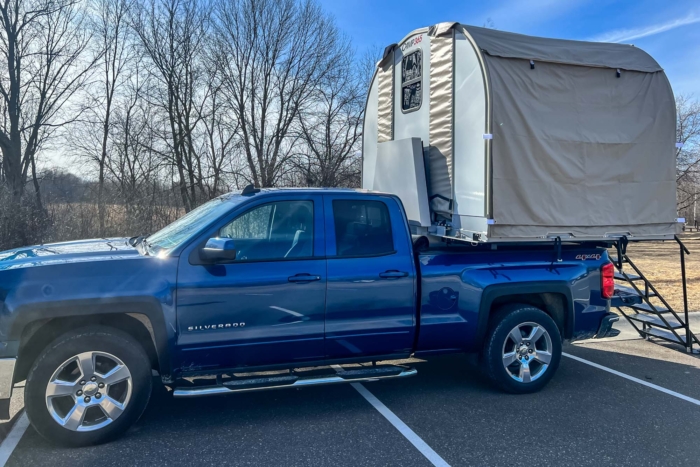In its heyday, the International Harvester Scout stood as the lone competitor to the Army’s Jeep. It was an SUV before SUVs were a thing. Now, it is a relic for collectors and auto historians. The forthcoming International Scout Encyclopedia looks at the history, mechanics, and mystery of that iconic 4×4.

The International Scout Encyclopedia, by Jim Allen and John Glancy, hits shelves July 30, but we got a sneak peek of a lost chapter that you won’t find in the print edition. The following excerpt is printed with the permission of Octane Press.
A Visionary Camper
The International Harvester Scout Camper was an innovative idea to turn the 1963 Scout 80 into a fully self-contained mini motorhome with four-wheel drive. There had been nothing like it in mass production before and there would be nothing like it again until the 1970s.
The Scout Camper was designed to sleep up to four, two very comfortably in bunks that folded out from the sides, and two in an optional hammock slung in the middle. The fiberglass body was designed, manufactured and installed by Winner Boats of Dickson, Tennessee (A.K.A. Dickson Boats), via a spun-off division called Fibertron. A specially equipped, partly stripped Scout was sent to the Dickson factory for conversion, after which it would be transshipped to a dealer.


 The interior space was cramped and acrobatic skills were required to access the bunks. Depending on your point of view, the fold- out potty location was either a stroke of genius or the stuff of nightmares. You could literally sit on the pot, cook and access the icebox all at once.
The interior space was cramped and acrobatic skills were required to access the bunks. Depending on your point of view, the fold- out potty location was either a stroke of genius or the stuff of nightmares. You could literally sit on the pot, cook and access the icebox all at once.








